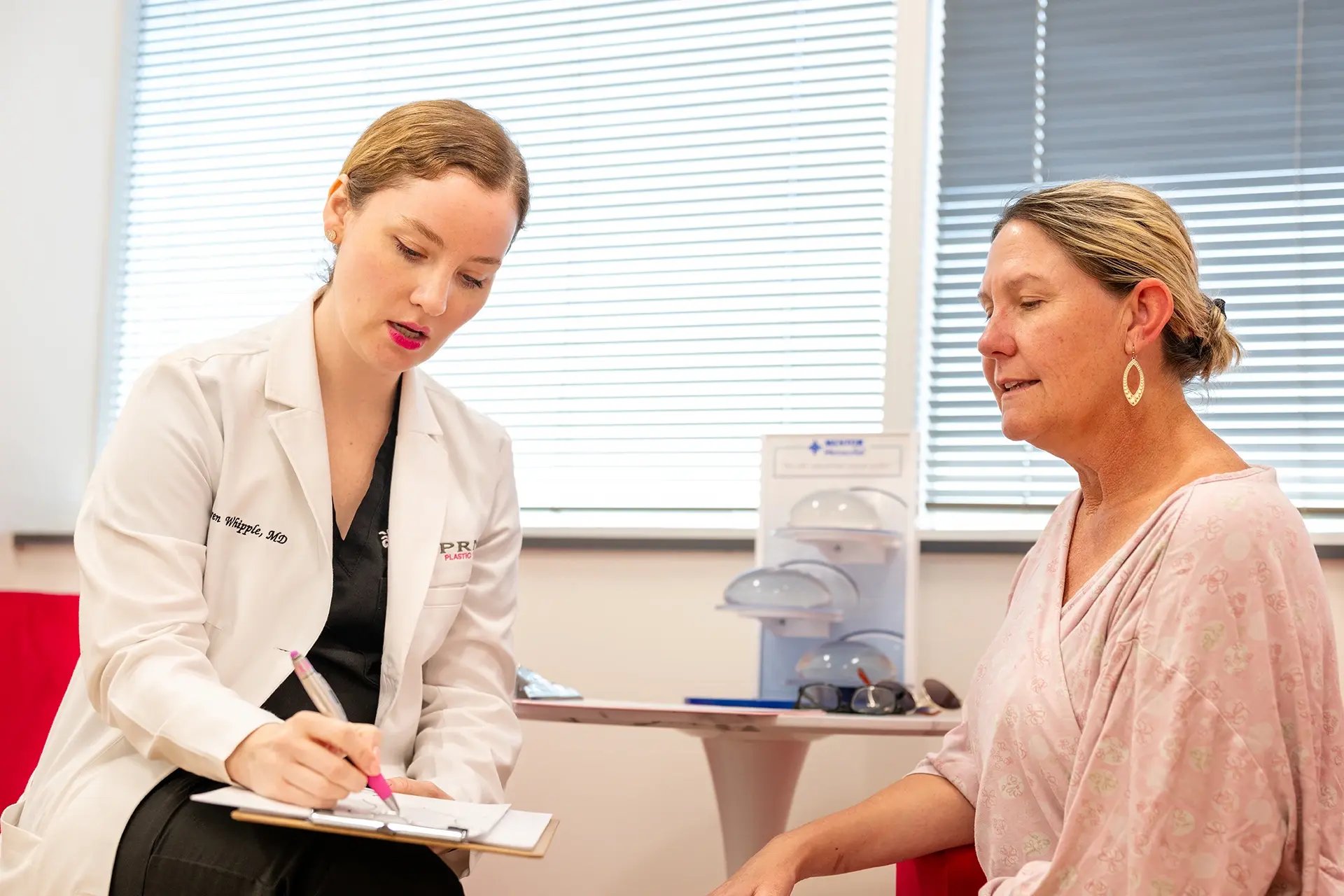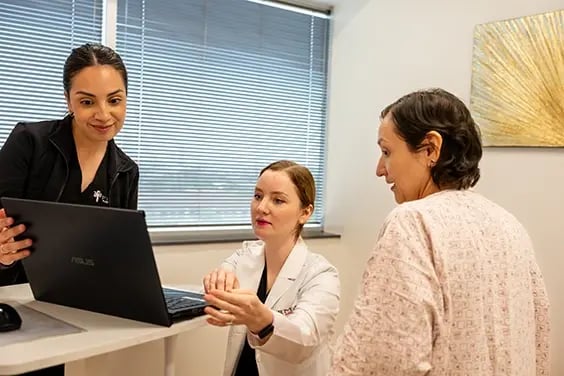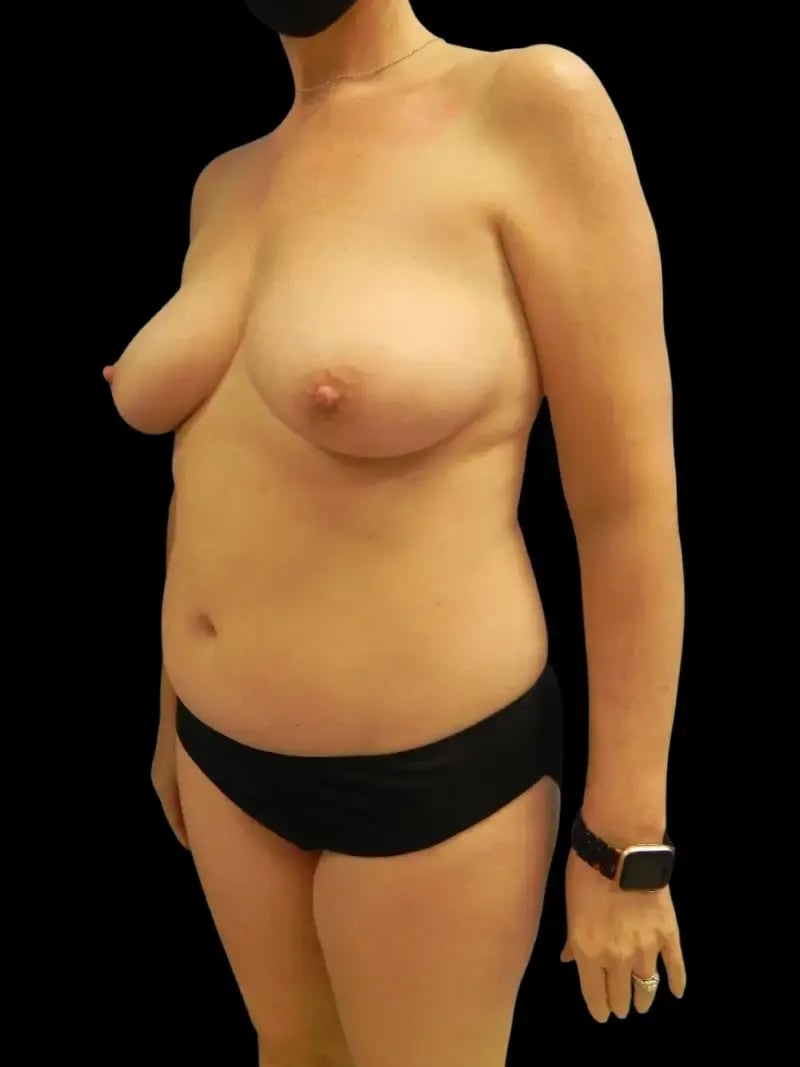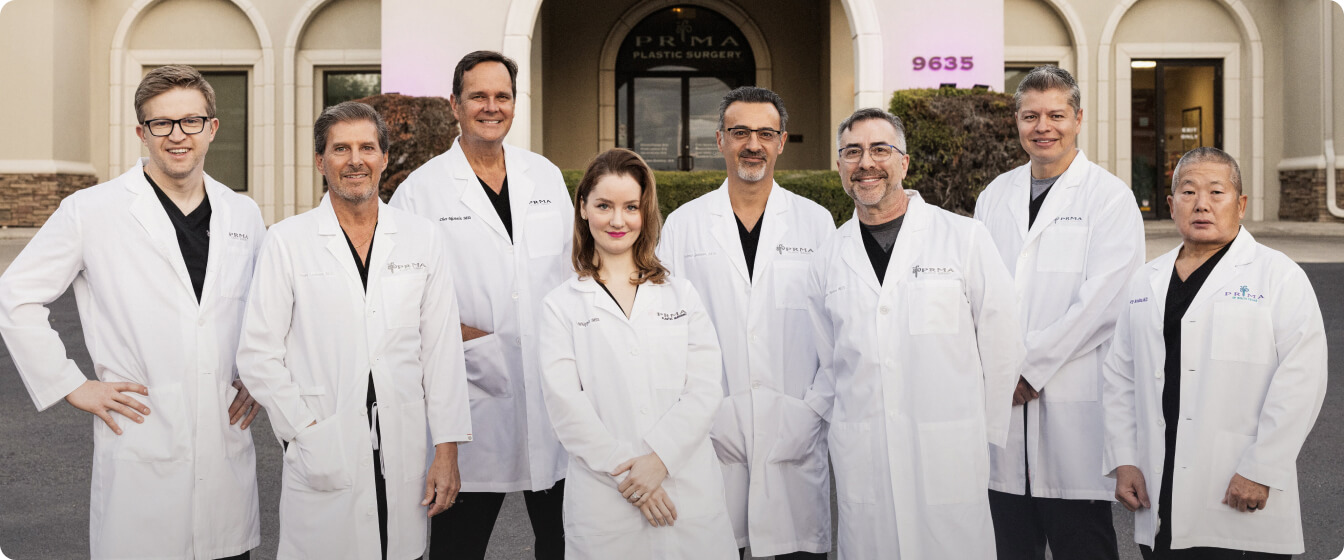
Breast Tissue Expander to Implant
What is a Tissue Expander to Implant Procedure?
A tissue expander to implant reconstruction is a two-stage option commonly chosen after mastectomy. This approach is often recommended when immediate implant placement isn’t possible—such as when additional healing time is needed after mastectomy or when radiation therapy is anticipated.
Unlike a direct-to-implant reconstruction, the tissue expander method gives the body more time to adjust, making it a more cautious option for certain patients.
It also differs from hybrid reconstruction, which combines a smaller implant with natural tissue for a softer, more natural look and feel.
Key Information
- Two-Stage Process: Involves an initial surgery to place a temporary tissue expander, followed by a second surgery to insert the permanent implant. Fat grafting is also commonly included in the second stage to improve the soft tissue “padding” over the final implant.
- Gradual Expansion: The breast tissue expander is slowly filled over time to gently stretch the skin and muscle, preparing the area for the final implant.
- Flexible Timing: Ideal for patients who need to delay final reconstruction due to healing, chemotherapy, or radiation.
- More Control Over Final Shape: Expansion allows gradual adjustment of breast size and contour before permanent implant placement.
- Not Immediate: Unlike direct-to-implant reconstruction, this method requires two separate surgeries, spaced weeks or months apart.
- No Added Tissue: Unlike hybrid procedures, this method relies solely on implant volume—no natural tissue is used to enhance softness or shape.
- May Not Be the Best Long-Term Option for Everyone: Patients looking for a more natural feel or long-lasting solution may prefer natural tissue-based reconstruction.
What to Expect During Surgery
A breast tissue expander procedure is typically performed at the time of a mastectomy or soon after. A temporary tissue expander is placed beneath the chest muscle and skin, then gradually filled with saline over a period of weeks during quick in-office visits. This expansion gently stretches the skin to create space for the final implant.
Once the desired size is reached and any additional treatments are complete, you’ll have a second outpatient surgery to replace the expander with a permanent silicone or saline implant.

Before & After








Recovery Timeline
-
Week 1:During the first week, you’ll feel sore and swollen, with some tightness in your chest. Pain is manageable with medication, and light walking is encouraged to help with circulation.
-
Week 2:Most discomfort will have improved by the second week, and you may have your drains removed at this stage. You can resume light tasks but should continue avoiding heavy lifting or overhead movement.
-
Weeks 3-4:Swelling decreases, and mobility continues to improve. By this time, many patients feel ready to return to work or regular routines, though strenuous activity is still limited.
-
Week 5-6Most daily activities can safely resume. With your surgeon’s approval, light exercise may begin, but avoiding anything that strains the chest area is still important.


The Nation’s Destination for
Sensation Restoration
Am I a Candidate for a Breast Tissue Expander?
Not everyone is an ideal candidate for a breast tissue expander. Factors like overall health, prior treatments, and personal reconstruction goals all play a role in determining whether this implant-based reconstruction option is the best fit.
You may be a strong candidate for a breast tissue expander if:
- You’re undergoing a mastectomy and prefer implant-based reconstruction.
- You need or plan to receive post-mastectomy radiation therapy.
- There isn’t enough natural tissue available for flap-based reconstruction.
- You prefer a shorter initial surgery and recovery time.
- Your chest skin or muscle needs time to heal or stretch before placing a permanent implant.
- You’re open to a staged reconstruction process involving two surgeries.
Find Your Surgeon
Will Insurance Cover a Mastectomy Tissue Expander?
In most cases, insurance will cover a tissue expander to implant procedure. Under the Women’s Health and Cancer Rights Act (WHCRA), all group health plans and insurers that cover mastectomy are also required to cover breast reconstruction, including procedures using tissue expanders and implants.
At PRMA, our team works closely with patients and insurance providers to verify coverage and maximize benefits.
For more information, visit [Insurance FAQs] in the patient resource center.

Preparing for Surgery
Learn more about:




